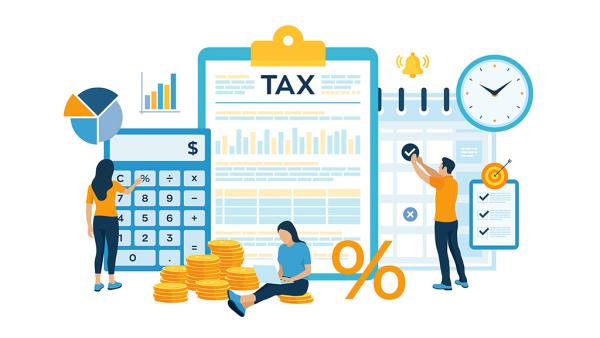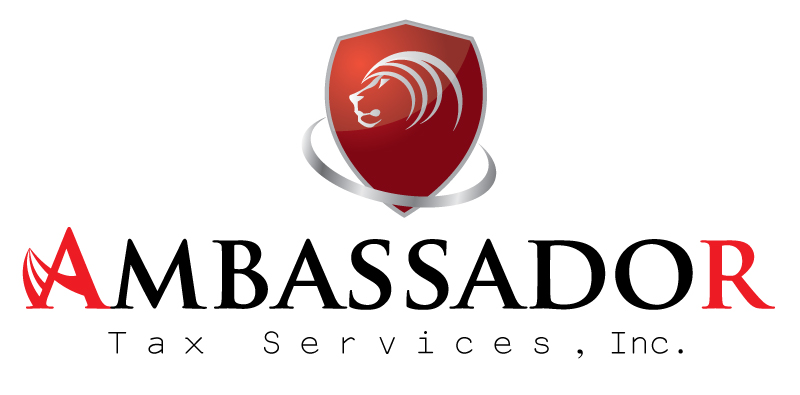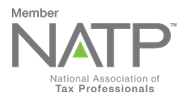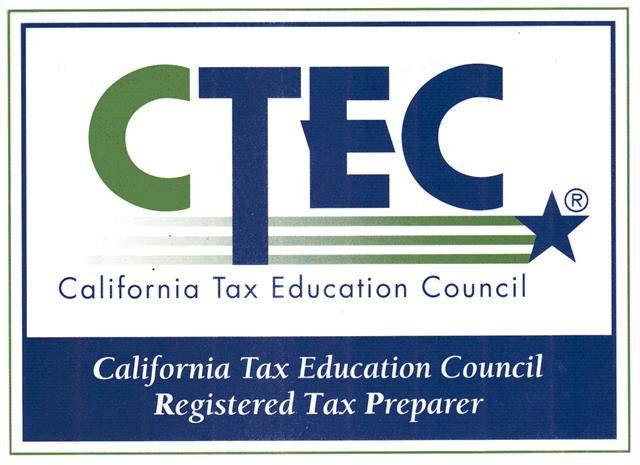
by Taxing Subjects | Nov 27, 2023 | Tax Tips and News
The IRS and its Security Summit partners from the national tax industry and state tax agencies announced the 8th annual National Tax Security Awareness Week, set to begin November 27. Protection of financial information and identity theft prevention are the focus of the week-long awareness campaign backed by the Security Summit. This coalition consists of the IRS, state agencies, tax professionals, and tax software companies whose goal is to promote private and public sector cooperation to increase knowledge of the threats tax preparers face. Drake Software® is proud to be an original member of the Security Summit and continues to hold membership with 23 other industry offices.
The National Tax Security Awareness Week Itinerary
Drake users have a lot to look forward to during this year’s National Tax Security Awareness Week:
- Partners of the Security Summit will have access to educational material in the form of IRS publications and e-posters to help spread security awareness.
- The IRS has a social media awareness campaign planned on all of the social channels used by the Security Summit.
- Press Releases sharing the central topics to National Tax Security Awareness Week will release daily, providing information to tax professionals about avoiding the dangers of tax schemes and identity theft.
During the end of the year and holiday season, increased online gift purchases and tax filing deadlines can present increased risk of losing private information by way of scams and fraud. The National Tax Security Awareness Week’s timing is designed to refresh tax preparers on how to avoid these situations which can appear in the form of identity thieves posing as charitable organizations or even the IRS using fake emails and text messages asking for personal tax information which they can use to file returns.
Both Drake Software and the IRS recommend tax professionals review their security measures this week and implement some of the strategies listed below to identify and thwart these theft attempts:
- Preparers should create data security and recovery plans to handle or prevent information breaches.
- Tax professionals can familiarize themselves with phone schemes where the caller pretends to be a new client.
- The FTC requires that tax preparers use multi-factor authentication to safeguard client data. Tax software accounts should also be protected with multi-factor authentication.
- Tax employees and professionals working remotely need to use a VPN.
The November 30 webinar, Developing a Written Security Information Plan, led by Jared Ballew, the Vice President of Government Relations at Drake Software and representatives from the IRS covers tax security to educate tax preparers on dangers and solutions from tax fraud. The registration link can be found on this IRS news release.
Additional Security Focuses for the Week
One topic at the forefront of this year’s National Tax Security Awareness Week is the IRS Identity Protection Pin program. This is a service taxpayers can use to help protect their tax returns. The pin is a six-digit code only the IRS, the filing individual, and a trustworthy tax provider should know. It guards social security information on tax refunds. If interested in this security measure, visit the IRS link here.
The Security Summit recognizes small businesses as the group most likely to be the victim of financial fraud and will cover ways to specifically protect them during tax security week. The 14039-B theft report form and W-2 income information scam and topics of conversation for small companies.
Resources and Information
Drake Software strives to offer our clients the best resources and security available in the industry. We published several blogs this year that are companion pieces for the tax preparer security topics covered this week. Read our blog posts on cybersecurity, employee retention credit scams and IRS security requirements for more preparation to fend off attacks on sensitive information.
The article from the IRS on National Tax Security Awareness Week can be found here.
– Article provided by Taxing Subjects.

by Taxing Subjects | Nov 22, 2023 | Tax Tips and News
The window for claiming a pandemic-driven tax credit is still open to taxpayers who didn’t take advantage of it during the main Covid outbreak. But closing dates are approaching, making filing a claim for eligible taxpayers (tax years 2020 or 2021) a priority for tax preparers.
For a historical background, we have to go back to 2020 as we faced national economic challenges arising from the Covid-19 pandemic. The IRS established the Recovery Rebate Credit to help those taxpayers who may have missed one or more of the Economic Impact Payments – also known as stimulus payments – that were released in 2020 and 2021.
While it is likely that the vast majority of eligible taxpayers have already gotten their Economic Impact Payments directly or by claiming the Recovery Rebate Credit, the IRS is concerned that there are still taxpayers who are due the credit, but haven’t received payment.
Any eligible taxpayers, however, must file a tax return to claim the credit – even if they had little or no income.
Who is Eligible and for How Long?
The Recovery Rebate Credit is available for the 2020 and 2021 tax years.
Taxpayers filing for 2020 must have been a U.S. citizen or resident alien in 2020 and cannot have been a dependent of another taxpayer during the tax year. In addition, qualified taxpayers must have a Social Security number issued before the due date of the tax return that’s valid for U.S. employment.
Taxpayers claiming the 2020 Recovery Rebate Credit must file a tax return by May 17, 2024.
Those taxpayers filing for 2021 must have been a U.S. citizen or resident alien in 2021 and cannot have been a dependent of another taxpayer during that tax year. Additionally for 2021 filers, taxpayers must have a Social Security number issued before the due date of the tax return that’s valid for U.S. employment or claim a dependent with an Adoption Taxpayer Identification Number.
Claims for the 2021 Recovery Rebate Credit must be filed in a federal tax return by April 15, 2025.
The Recovery Rebate Credit can also be claimed on behalf of a taxpayer who has died. The 2020 credit can be claimed for someone who died in 2020, while both the 2020 and 2021 credits can be claimed for someone who died in 2021 or later.
Note that any Recovery Rebate Credit that is received cannot be counted as income when determining one’s eligibility for federal benefits. This includes Supplemental Security Income or SSI; Supplemental Nutrition Assistance Program or SNAP; Temporary Assistance for Needy Families or TANF; or the Special Supplemental Nutrition Program for Women, Infants and Children, known as WIC.
If someone claims the credit, it has no bearing on their immigration status or their ability to get a green card or other immigration benefits.
Taxpayers who are unsure if they got the Economic Impact Payments can check their IRS Online Account to check for payments and amounts.
Source: IRS reminds eligible 2020 and 2021 non-filers to claim Recovery Rebate Credit before time runs out
– Article provided by Taxing Subjects.

by Taxing Subjects | Nov 13, 2023 | Tax Tips and News
The Internal Revenue Service has passed along an early Christmas present of sorts to many taxpayers by increasing the maximum contribution amounts for 401(k) plans in 2024.
The contribution hike covers those employees who take part in 401(k), 403(b), or most 457 plans. Participants in the federal Thrift Savings Plan are also included in the increase. Taxpayers who participate in any of these plans can now contribute up to $23,000 for 2024; that’s up from $22,500 under the previous rules. Catch-up contribution limits for these same taxpayers, however, stay at present levels.
For those with SIMPLE retirement accounts, contribution limits have been raised from $15,500 to $16,000.
The new rules also boost the limit on contributions to an IRA, raising the bar from $6,500 to $7,000. Despite legislation including an annual cost-of-living adjustment (via the SECURE 2.0 Act of 2022), IRA 2024 catch-up contribution limits remain at $1,000 for those participants 50 and over.
Income Limits on Deduction Eligibility Increased.
A taxpayer’s eligibility to deduct their contributions to traditional IRAs or Roth IRAs, or to claim the Saver’s Credit can hinge on the filer’s income. In all three instances, these income ranges were increased by the IRS as well.
Deduction phase-out for traditional IRAs gets an overhaul from the new guidance. Affected taxpayers include Single covered by a retirement plan at work, and Married filing jointly with the spouse making the IRA contribution covered by a workplace retirement plan.
Complete details on these and deduction phase-outs – including those for Roth and SIMPLE plans, and the Saver’s Credit – are available in Notice 2023-75 on the IRS website. The Notice has technical guidance on all the cost-of-living adjustments set in motion by the SECURE Act 2.0 legislation.
Source: 401(k) limit increases to $23,000 for 2024, IRA limit rises to $7,000
– Article provided by Taxing Subjects.

by Taxing Subjects | Nov 3, 2023 | Tax Tips and News
We are just weeks away from a new tax season, and that means it’s time for tax professionals to renew their Preparer Tax Identification Numbers (PTINs). This identification number expires annually on December 31st for paid tax professionals.
There are currently some 800,000 active tax preparers who prepare federal tax returns for a fee which means they are required to have a valid PTIN. The paid preparer’s PTIN must be included on any return or claim for refund filed with the Internal Revenue Service. Paid tax preparers who don’t have or use a valid PTIN will be subject to penalties.
At $19.75, the fee for a 2024 PTIN is affordable enough, and renewal is simple. The online renewal process takes just 15 minutes to complete. There is also a paper option, Form W-12, IRS Paid Preparer Tax Identification Number (PTIN) Application and Renewal, available along with instructions from the IRS website. Be aware, however, that while the online application is processed in real time, the paper version could take up to six weeks.
PTIN Can be a Gateway to Higher Readiness for Non-Credentialed Preparers.
Acquiring a valid 2024 PTIN is more than a requirement; it can also open doors to higher levels of professionalism for those preparers who aren’t enrolled agents (EAs), attorneys or CPAs. The IRS’ Annual Filing Season Program (AFSP) is a voluntary series of courses tailor-made for the non-credentialed tax pro.
Once they’ve acquired their new PTIN, participants have until Dec. 31 to complete up to 18 hours of continuing education from IRS-approved CE providers, aimed at increasing their knowledge and improving filing season readiness. DrakeCPE offers options for those tax preparers who would like to grow professionally; read more about the classes we offer here.
Participants also must agree to abide by the rules and obligations in Treasury Department Circular 230, Regulations Governing Practice Before the Internal Revenue Service.
For their hard work and cooperation, the successful tax pro gets a diploma of sorts – an Annual Filing Season Program Record of Completion – and something even more valuable: a listing in an online directory of tax return preparers that includes credentials and select qualifications.
This directory is searchable and aims to connect taxpayers with tax professionals in their area who have completed the AFSP or have other credentials recognized by the IRS.
One of the highest such credentials is the enrolled agent, bestowed on tax professionals for their special talents in a number of tax areas, including federal tax planning, individual and business tax return preparation and other representation situations. Enrolled agents have unlimited rights to practice before the IRS and are allowed to represent any client before the IRS on any tax issue. To learn more about what it means to be an enrolled agent and other certification information, check out our blog Certifications for Tax Professionals.
And it all starts with renewing that PTIN.
For more information on PTINs, to renew a PTIN or to apply for a PTIN online, go to IRS.gov/taxpros on the IRS website.
Source: IRS 2024 PTIN renewal period underway for tax professionals
– Article provided by Taxing Subjects.

by Taxing Subjects | Nov 2, 2023 | Tax Tips and News
As we prepare for the 2024 tax season, the IRS is also updating regulations for tax forms and filing requirements. One such regulation establishes a new threshold for electronic filing of certain returns. This change has implications for employers and taxpayers alike, as it affects the way tax-related information is submitted to the IRS.
In this blog, we discuss the details of this amendment, its significance, and how it may impact employers and taxpayers in the years to come.
Context for the amendment
On February 23, 2023, the Treasury Department issued Treasury Decision 9972, amending Regulations Section 301.6011-2. This amendment specifically targets the threshold for electronic filing of information returns—once a business exceeds a certain number of returns, the business is required to file the returns electronically.
The new threshold is now 10 returns, which is no small change. What’s more, the new threshold goes into effect next year, which means that tax year 2023 will fall under the new rules—some of which are required to be filed by January 31, 2024.
Why the change?
The amendment serves several important purposes:
- Enhanced Efficiency: Electronic filing is often more efficient and less prone to errors than paper-based filing. Lowering the threshold encourages employers to utilize electronic filing, thus contributing to smoother tax processing.
- Cost Reduction: Electronic filing can be more cost-effective for employers in the long run, eliminating the need for paper forms, postage, and manual data entry.
- Reduced Environmental Impact: Encouraging electronic filing aligns with efforts to reduce paper waste and promote environmentally friendly practices.
- Timely Filing: The amendment ensures that information returns for tax year 2023, specifically Forms W-2, are filed electronically by January 31, 2024, allowing for timely and accurate processing.
With these priorities in mind, the amendment’s purposes become more clear.
Forms affected by Treasury Decision 9972
The returns that fall under this new threshold include the following:
- Forms W-2
- Form 1099-NEC
- Form 1099-MISC
- Form 1042-S
- The Form 1094 series
- Form 1095-B
- Form 1095-C
- Form 1097-BTC
- Form 1098
- Form 1098-C
- Form 1098-E
- Form 1098-Q
- Form 1098-T
- The Form 1099 series
- Form 3921
- Form 3922
- The Form 5498 series
- Form 8027
- Form W-2G
Employers must add together the number of these information returns and the number of Forms W-2 they need to file in a calendar year. If the total equals or exceeds 10, they are required to file all forms electronically.
However, it’s important to note that corrected returns are treated separately and are not included in the calculation of the threshold mentioned above. Employers must adhere to specific rules when correcting Forms W-2c, which are detailed on the IRS website.
e-Filing solutions for small businesses: Meet Drake Accounting
These new regulations don’t have to break the bank for small businesses who are facing the e-filing threshold for the first time in 2024.
With Drake Accounting, you get unlimited e-filing, clients, installs per site, payroll, and form generation. Use different modes to process different types of paperwork in the Payroll Module and Accounting Module. At time of writing, 51 state forms can be e-filed from within the software.
Download a free trial version to see how Drake Accounting can help you provide professional accounting services.
Join the Taxing Subjects Newsletter to stay on top of tax news
As IRS regulations continue to evolve, staying informed about these changes is crucial for employers and taxpayers. The recent amendment, which lowers the threshold for electronic filing of certain information returns, promotes efficiency, cost-effectiveness, and environmental responsibility.
Employers must be prepared to adapt to these changes and ensure compliance with the new threshold starting in 2024. By understanding these modifications and acting accordingly, employers can contribute to a smoother tax process and a greener future.
Source: New electronic filing requirements for Forms W-2 | Internal Revenue Service (irs.gov)
– Article provided by Taxing Subjects.









